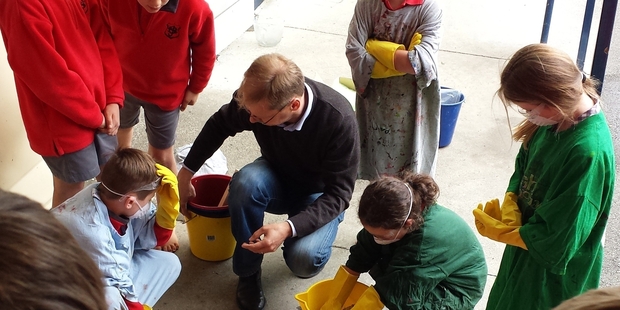Source: nzherald.co.nz

SUSTAINABLE: Duncan Sinclair of Black Pine Architects demonstrates the making of environmentally-friendly insulation to students at St Johns Hill School. PHOTO/SUPPLIED
As part of their study on energy efficient buildings, children at St Johns Hill School recently got to experiment with Duncan Sinclair of Black Pine Architects who visited the school to demonstrate the use of hempcrete.
Hempcrete is a bio-composite made of the inner woody core of the hemp plant mixed with a lime-based binder.
The hemp core or "shiv" has a high silica content which allows it to bind well with lime.
"The intention was to let the kids help with the mixing and tamping and make up a block of hempcrete, so that they can see and feel a healthy alternative to the more typical types of insulation found in New Zealand," Mr Sinclair said.
The children were studying the different ways that energy comes in to homes (sun, gas, electricity, food, the warmth of our bodies, etc) and how energy leaves homes (through the walls/roof/floor as heat and noise, via the warm waste water from our showers/washing, via air flow from open windows, bath/kitchen extracts, chimneys, etc).
"We focused on thermal insulation and options available to us to keep the heat energy inside our homes, so we don't 'lose' it," said Mr Sinclair.
They then studied the different types of insulation available - what chemicals they might contain or be treated with, the energy it takes to create the insulation, where it comes from (energy involved in transporting it), what to do with the waste material (off cuts, etc) and what to do with the material once it's useful life is over.
They then helped Mr Sinclair to make a batch of hempcrete and place it in a sample formwork to keep in the class room.
"It was a great way to get them to get involved in making a very effective and very 'green' insulation material that is becoming increasingly popular in New Zealand," he said.
The students gave feedback on their observations of the material, which were that it reduces global warming by sucking in CO2, that it is easy to make, renewable and no power tools are required to install it.
No comments:
Post a Comment